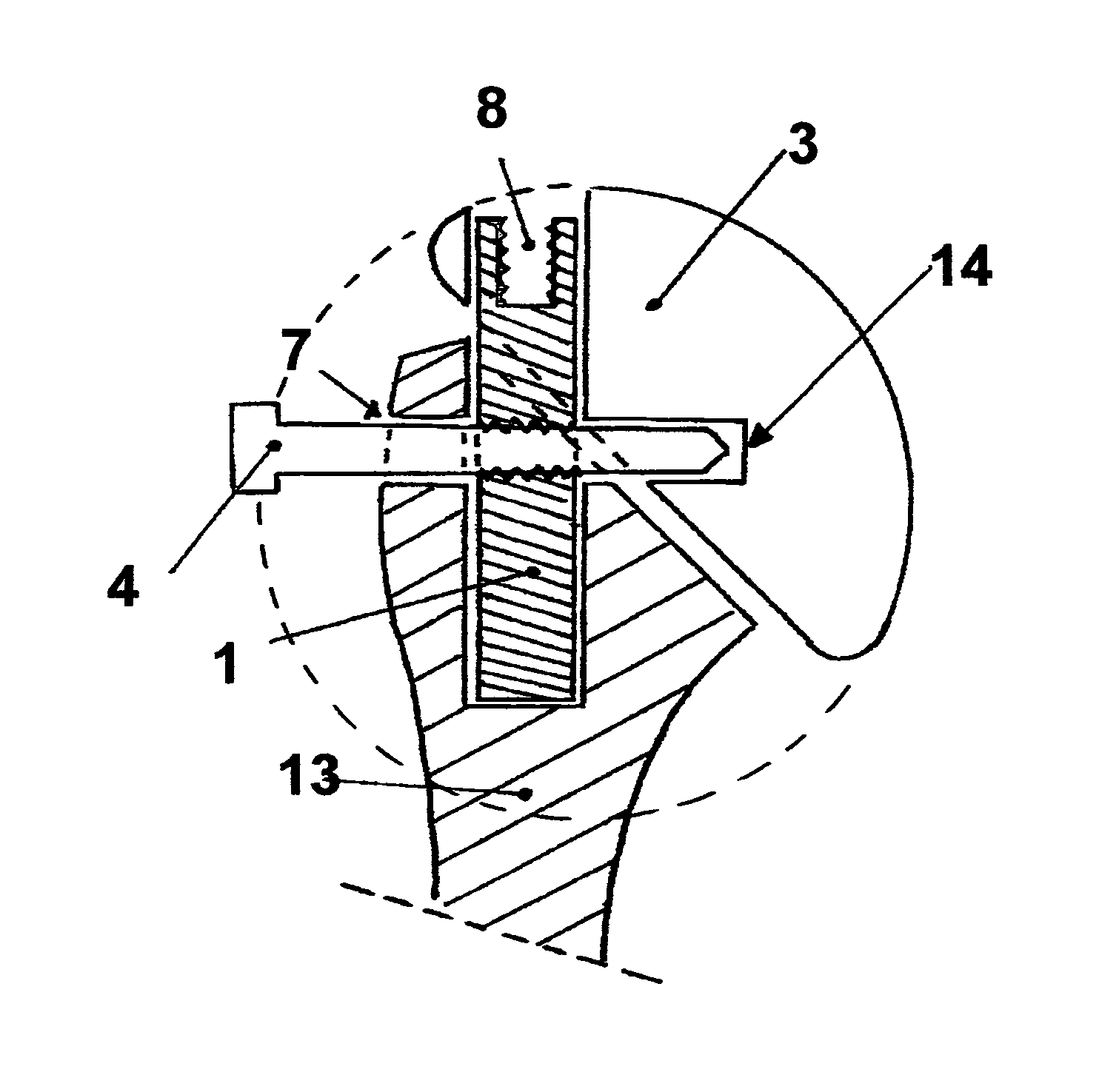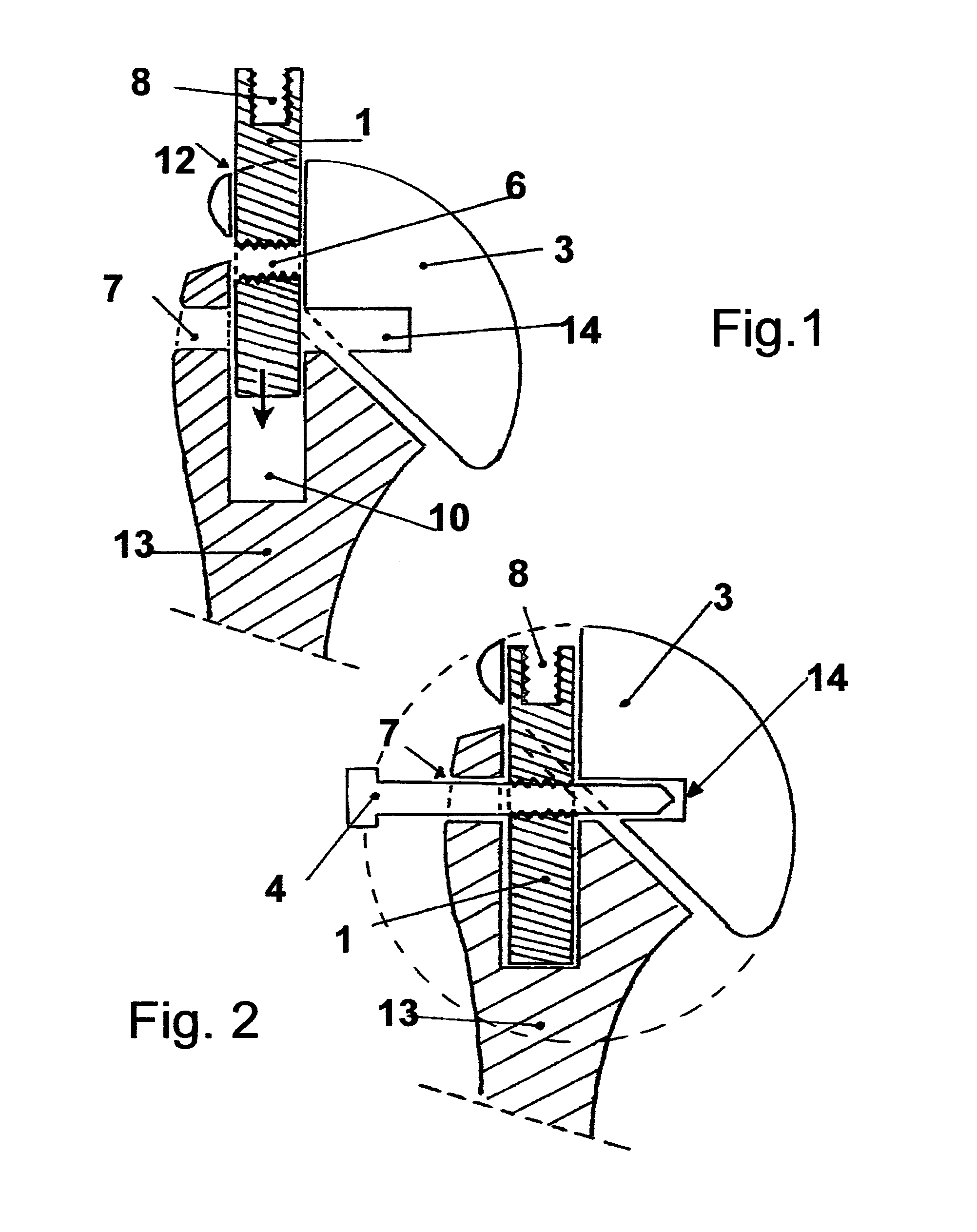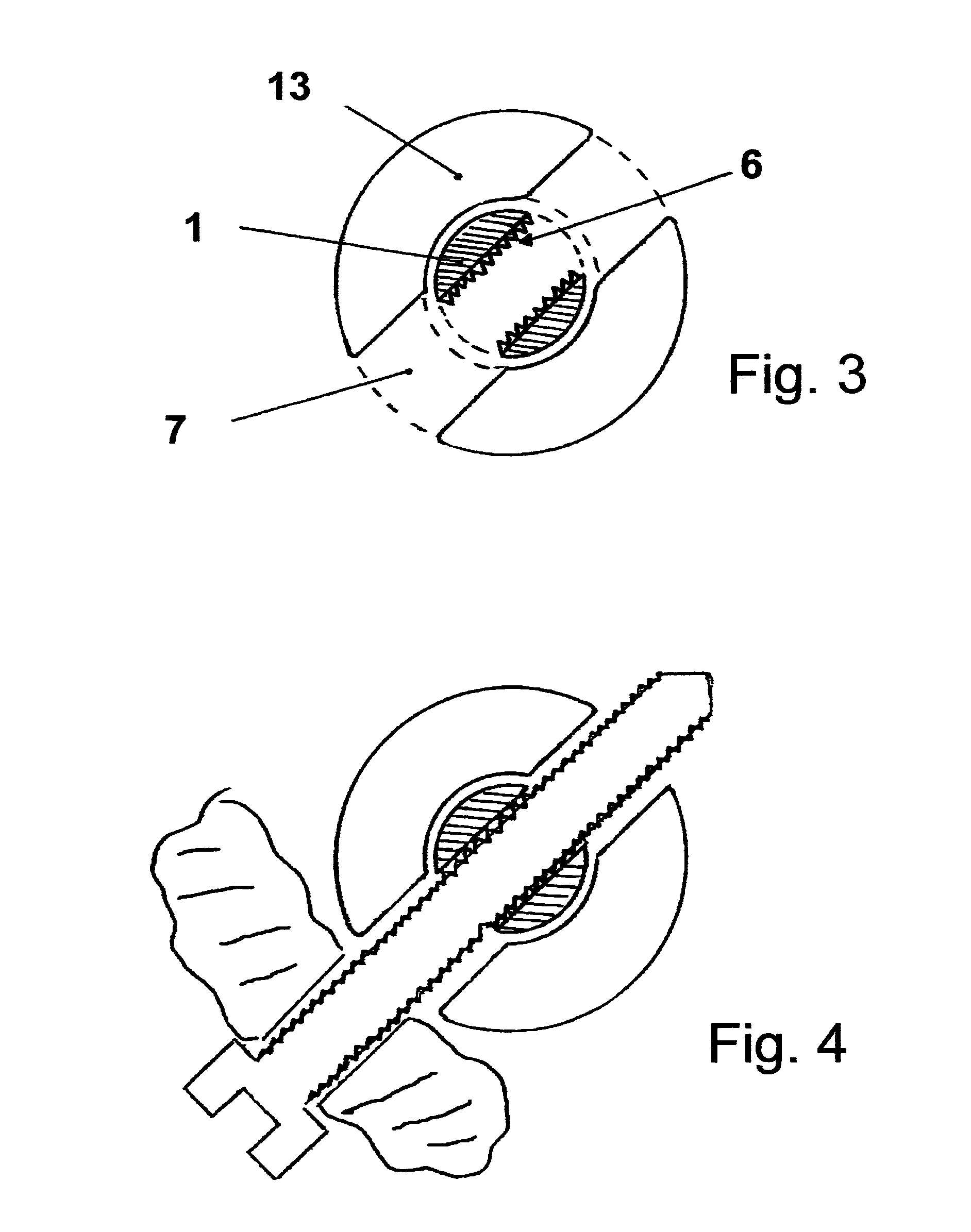Shoulder prosthesis with insert for locking screws
a technology of locking screws and shoulder prostheses, applied in the field of orthopaedic surgery, can solve the problems of inconvenient and tedious technique, inconvenient use, and inability to meet the needs of patients, and achieve the effect of re-inforcing the primary fixation of the prosthetic stem
- Summary
- Abstract
- Description
- Claims
- Application Information
AI Technical Summary
Benefits of technology
Problems solved by technology
Method used
Image
Examples
Embodiment Construction
[0041]As illustrated in FIGS. 1 and 2, the anchorage insert (1) is positioned within a central cavity (10) inside the upper part of the prosthetic stem (13). In this embodiment, the central cavity (10) is an axial hole with a vertical orientation. The upper end of the anchorage insert (1) is provided with a fixation site (8) for the targeting arm. The prosthetic humeral head (3) is provided, at its lateral side, with a vertical hole (12) that is coaxial with the central cavity (10) and designed to allow secondary insertion of the anchorage insert (1) after connection of the prosthetic humeral head (3) to the prosthetic stem (13). The upper part of the prosthetic stem (13) is also provided, on its outer surface, with at least one transverse smooth (unthreaded) borehole (7) having a near-horizontal orientation. The smooth transverse borehole (7), referred to as “slide-hole”, communicates with the central cavity (10) and is designed for the sliding passage of a bone screw (4). The anch...
PUM
 Login to View More
Login to View More Abstract
Description
Claims
Application Information
 Login to View More
Login to View More - R&D
- Intellectual Property
- Life Sciences
- Materials
- Tech Scout
- Unparalleled Data Quality
- Higher Quality Content
- 60% Fewer Hallucinations
Browse by: Latest US Patents, China's latest patents, Technical Efficacy Thesaurus, Application Domain, Technology Topic, Popular Technical Reports.
© 2025 PatSnap. All rights reserved.Legal|Privacy policy|Modern Slavery Act Transparency Statement|Sitemap|About US| Contact US: help@patsnap.com



